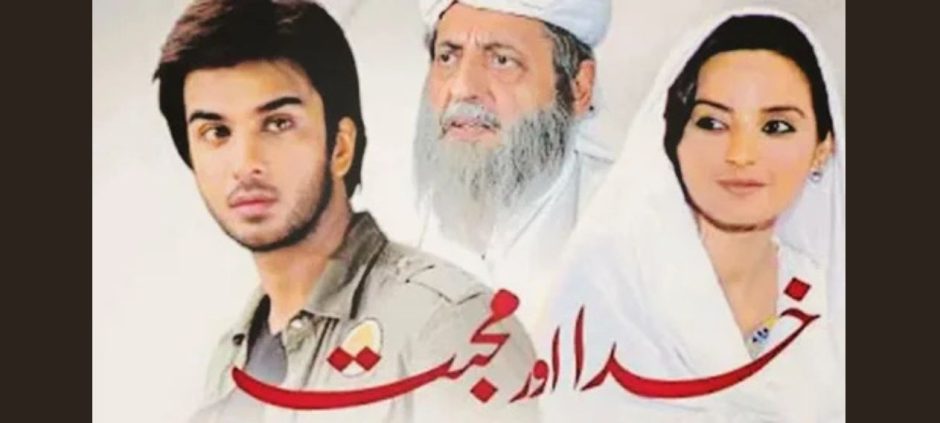If you thought Khuda Aur Mohabbat was just another Pakistani drama, think again, this is the show that rewrote the rules of romance and spirituality on television, and its evolution from Season 1 to Season 3 is nothing short of a cultural journey.
The Humble Beginnings: Season 1
The first season of Khuda Aur Mohabbat introduced us to a love story that felt raw and innocent. At its heart was the love between Mahi and Hammad, two souls from completely different worlds, and the drama excelled at balancing romance with religion.
- Simple Production, Big Heart: Season 1’s sets were modest. The makers didn’t rely on glitzy backdrops but instead focused on emotional authenticity.
- Character-Driven Storytelling: The narrative was tight. We weren’t distracted by subplots; it was all about Mahi and Hammad’s deep connection.
- Audience Resonance: Viewers connected to Hammad’s devoutness and Mahi’s purity; both characters felt relatable, not just idealized.
This first chapter laid the groundwork for what Khuda Aur Mohabbat would become: a heartfelt exploration of faith, love, and destiny.
Scaling Up: Season 2 Brings Bigger Ambitions
By the time Season 2 rolled around, things got grander and more complex. The production value got a major upgrade, and the narrative opened up in new directions.
- Expanded Set Design: From serene mosques to sprawling haveli-like mansions, the visual scope of Season 2 was noticeably richer.
- More Characters, More Drama: The writers added new faces, more moral dilemmas, and deeper spiritual crises. This made the story feel bigger and more layered.
- Stronger Themes: Season 2 leaned heavily into questions of sacrifice, devotion, and the cost of unrequited love. Audiences were no longer just watching a love story; they were witnessing a spiritual battle.
This growth wasn’t just in scale; it was in depth. The stakes felt higher, the characters more flawed, and the viewers more emotionally invested.
Season 3: The Transformation and Cultural Impact
Season 3 is perhaps the most talked-about chapter because it brought both dramatic scale and cultural conversation to a new level.
- Lavish Visuals & Cinematic Quality: With high‑budget sets, vibrant costumes, and sweeping landscapes, Season 3 rivals movie production. The visuals track the characters’ spiritual and emotional journey with grandeur.
- Complex Character Arcs: Hammad, Mahi, and the new characters evolve in ways that challenge audiences. Their faith is tested, their relationships are strained, and their decisions have real consequences.
- Deeper Spiritual Symbolism: This season uses religious symbolism in a powerful way, not to preach, but to provoke thought. It explores how faith and love can both uplift and destroy.
- Massive Cultural Ripple: Beyond the TV screen, Khuda Aur Mohabbat Season 3 sparked conversations about societal norms, spirituality, and young Pakistanis’ understanding of love. It became more than a show; it became a cultural touchpoint.
What Made This Evolution Possible
Let’s take a peek at how the makers pulled off this transformation, from writing to casting to production.
Writing & Direction: Over three seasons, the writing team sharpened its craft. Dialogue became more nuanced, the pacing more deliberate, and the spiritual themes more layered.
Casting Choices: The actors themselves matured or changed. Their on-screen chemistry grew more believable, and new cast members brought fresh energy.
Technical Upgrades: Camera work improved, sound design deepened, and lighting became more symbolic (for instance, using soft light to reflect moments of divine presence).
Emotional Coaching: To portray spiritual conflict authentically, actors often worked with consultants and coaches. This gave their performances weight and sincerity.
Why Khuda Aur Mohabbat Is More Than a Drama
The show did something rare: it made us talk. Beyond being entertainment, Khuda Aur Mohabbat opened a space for conversation.
Impact on Viewers: It sparked debates on social media about love, worship, and societal expectations.
Influence on Pakistani Media: Other shows followed suit, giving more room to spiritually infused romance. But Khuda Aur Mohabbat remains a benchmark.
Cross-Generational Appeal: It resonated with the young and old, faith-driven youth saw Mahi and Hammad’s devotion as aspirational, while older viewers recognized the familiar tension between tradition and desire.
Parting Thoughts
Khuda Aur Mohabbat didn’t just evolve, it grew up. From a humble, heart-centered love story in Season 1 to a visually powerful, culturally resonant masterpiece in Season 3, the drama has become a landmark in Pakistani television.
If you’re curious about how TV narratives influence culture, or if you want to read more behind-the-scenes analysis, check out this piece on top‑ranked drama mistakes that sparked outrage among fans, it’s a goldmine for anyone who loves both pop culture and social commentary.










